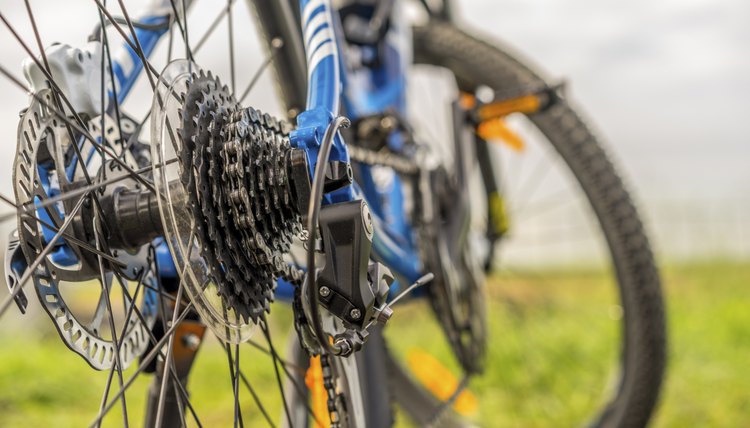How to Determine How Many Speeds Are on a Bike

Figuring out how many speeds a bike has is one of the easier tasks you have to do if you’re fixing up an old frame. Even if the shifter is missing or worn, counting the speeds on a bike just takes a bit of multiplication.
Part Identification
Bikes have two sets of gears. The first set is by the crank, or the arm to which the pedal attaches. The second set is on the back wheel, right in the center of the wheel, on the same side as the crank. The back gears are also called cassette cogs. The chain wraps around the gears, or sprockets, on these sets and controls pedaling difficulty and cadence. The chain moves between the gears when you change the position of the indicator on the shifter, which moves the front and rear derailleurs.
Count and Multiply
Count the number of gears by the crank. You’ll see one, two or three gears. Then, count the gears on the rear wheel. You can have anywhere from one to 10 on here. Multiply the front gear number by the rear gear number to get the number of speeds. For example, if you have two front gears and five back gears, you have a 10-speed bike. If you have one front gear and three back gears, you have a 3-speed bike. If you have three front gears and nine back gears, you have a 27-speed bike.
Single-Speed Bikes
If you see only one front gear and one back gear, you have a single-speed bike. These do not need shifters on the handlebars because there’s nowhere for the chain to go.
References
Writer Bio
Suzanne S. Wiley is an editor and writer in Southern California. She has been editing since 1989 and began writing in 2009. Wiley received her master's degree from the University of Texas and her work appears on various websites.
